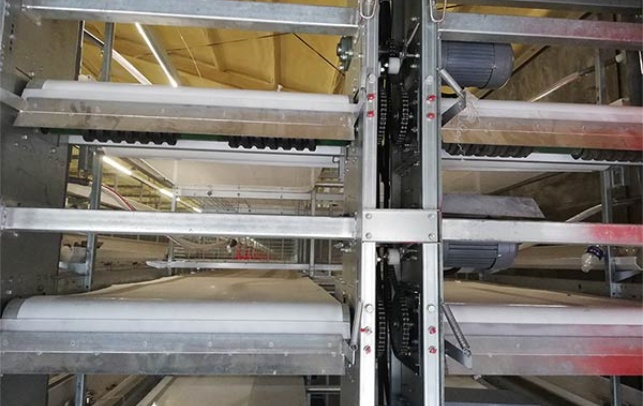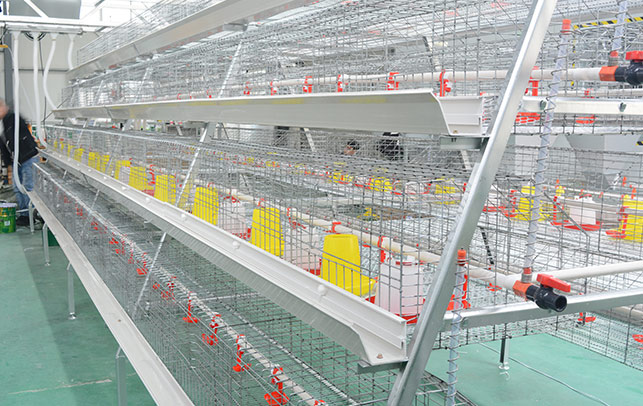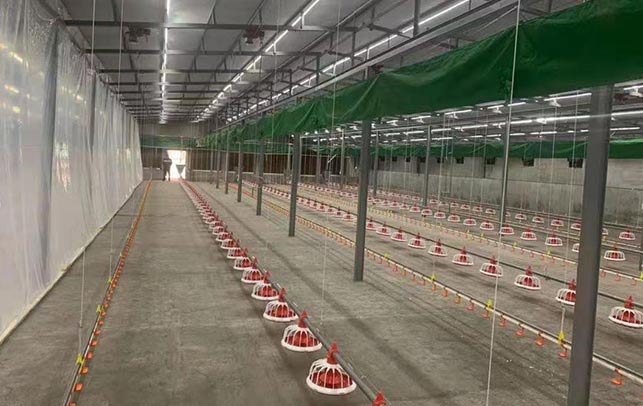How to Raise Baby Chicks in the First 10 Days
Time : 2024-05-08
If you want to start a poultry farm business, you may be wondering how to raise chickens. This article summarizes the tips for raising chicks in the first ten days after they are born. Hope it helps you.
Summarize how to keep chicks warm
The first day: The temperature inside the house is between 35-37℃, the humidity is between 65% and 70%, and the light is on for 24 hours.
Day 2-3: The lighting time is more than 22 hours, and the humidity is about 70%.
Days 4-7: Control the temperature inside the house at 34-36°C and provide ventilation.
Day 8: The lighting time is 14 hours, and the temperature inside the house is about 34°C.
Day 9-10: The temperature inside the house is 33-34℃ and the humidity is about 60%.
After chicks hatch, they must be raised in special conditions at higher than normal temperatures until their size and feather cover develop to the point where they can handle the more normal brooding temperatures. During this period, the chicks should be given comfortable temperature and humidity, reasonable lighting, and a scientific water-to-material ratio to strengthen the chicks’ immunity and disinfect the chicken house. Scientific feeding techniques and active observation of chicks’ behavior can help understand the chicks’ adaptability to the environment, thereby making reasonable adjustments to the feeding environment.
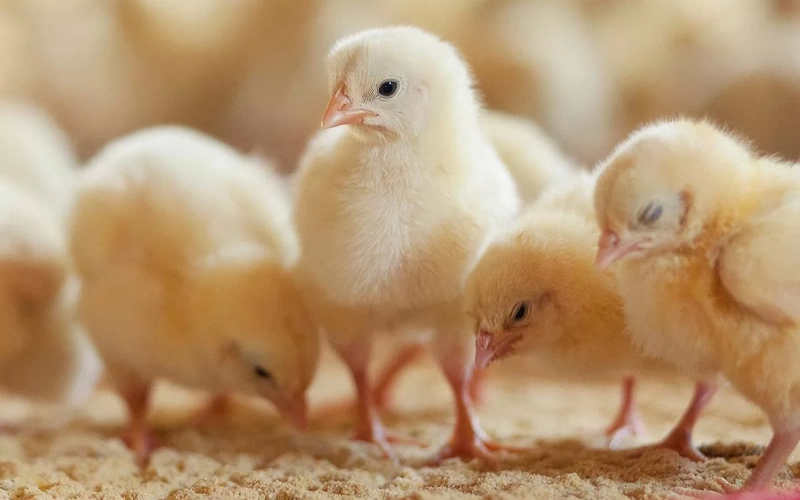
How to raise chicks from day 1 to day 10
This article aims to explain in detail the feeding techniques and how to raise chicks in the first ten days after they are born. All these steps are essential for the health and sustainability of your chicks.
1.Chicks on the first day
Before the chicks arrive at the chicken house, the temperature inside the chicken house needs to be preheated. The temperature should be controlled at 35-37°C and the humidity should be controlled at 65%-70%.
The purpose of preheating is to better raise the temperature of the chick house to standard before the chicks arrive at the chicken house. On the other hand, it is to prevent the chicks from feeling cold when they come into contact with the chick cage, thereby causing a stress reaction. Especially when chicks are lying in a cage or on a net, their abdomen is more likely to catch cold. So preheating is a very important step. Special note: Keep the floor and walls warm to prevent chicks from crawling into the coop and huddling together due to the cold.
The temperature of brooding is required to be lowered by 2℃-3℃ and maintained at this temperature for 20-40min. The purpose is to allow the chickens to adapt to the environment and avoid stress reactions.
Prepare vaccines, nutritional medicines, disinfectants, water, feed, bedding materials and disinfection facilities.
After the chicks enter the chick cage, close the cage door promptly and allocate appropriate feeding density as soon as possible. When free-range, there are about 20-30 chicks per square meter. The feeding capacity of the chick cage is about 50-60 birds/square meter.
The chicks should be fed with water promptly after entering the cage. The most recommended is cold water. You can add 5% glucose and multivitamins to the water.
Then start feeding, the feed can be placed in a trough or tray. Food should be mainly high in protein, and the crude protein content should not be less than 19.5%.
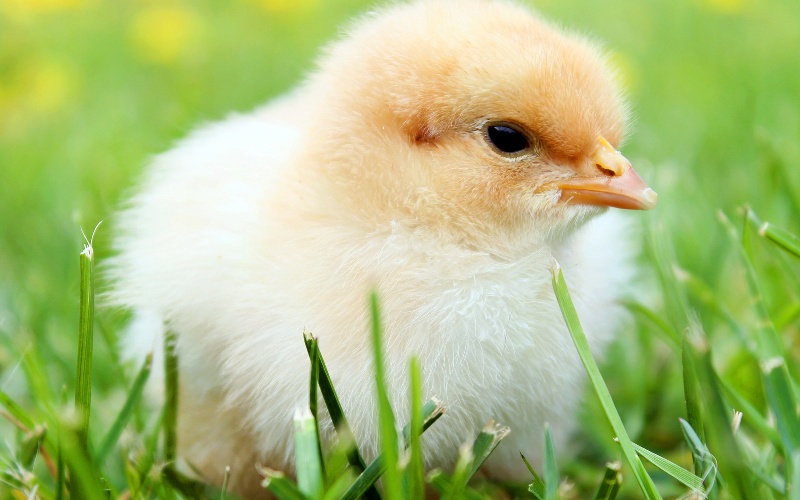
2. Chicks on day 2 and day 3
The lighting time should be guaranteed to be at least 22 hours, and the lighting intensity should be around 10 lux. Humidity should be around 70%. (The control of light intensity and light humidity is the same as on the first day).
Medications or vaccines can be used to prevent respiratory and infectious diseases in chickens.
3. Chicks on days 4-7
Starting from the fourth day, the light time can be gradually reduced, and the light time can be reduced by one hour every day. That is, 23 hours on day 4, 22 hours on day 5, 21 hours on day 6, and 20 hours on day 7.
Drinking water and feeding can be changed to 3 times a day. Provide running water as drinking water. Drugs cannot be used within 24 hours before and after immunization, and the dosage of multivitamins in the water should be appropriately reduced according to the health status of the chicks.
The temperature inside the house can be reduced by 1-2℃, that is, 34-36℃. (Light intensity and temperature control methods are the same as on the first day).
Pay attention to ventilation in the house. Generally, the temperature inside the house should be increased by about 2℃ before ventilation, and ventilation should be done 3 to 5 times a day. Especially for chicken houses that use coal-fired heating, ventilation should be strengthened to reduce the content of carbon monoxide and sulfur dioxide in the house to prevent gas poisoning.
Clean up chicken manure every day, and disinfect it after cleaning.
On the 7th day, weigh 5% of the chicks to see if they meet the standards, and then adjust the daily feed dosage accordingly.
4.Day 8 chicks
The daily lighting time is shortened to 14 hours, the temperature inside the house is reduced to 34-35°C, the humidity is 65%, and the light intensity can be appropriately weakened.
You may consider debeaking your chicks to prevent them from pecking at feathers, toes and anuses, see When and How to Debeak Chicks for details.
The position of beak trimming is one-half from the tip to the nostril, and one-third of the bottom beak needs to be cut off.
After beak trimming, bleeding should be prevented quickly and 5 mg/50 kg of vitamin K3 should be added to the drinking water. Weak chicks cannot be beaked.
Three days after beak trimming, certain drugs must be added to the drinking water to prevent wound infection.
Five days after beak trimming, feed should be placed in the trough as much as possible to prevent the chicks from licking the empty trough and causing wound infection.
5.Chicks on day 9-10
Reduce light time by 1 hour every day. That is, 18 hours on the 9th day and 17 hours on the 10th day (the light intensity is the same as on the 8th day).
Some medicines can be used during these two days to prevent respiratory diseases.
Adequate feed should be given to ensure its nutrition, as well as water.
Increase ventilation volume and frequency. Basically, ventilation is required every 2-3 hours.
The temperature inside the house should be controlled at 33-34°C, and the humidity should be 60%.
Regarding how to raise chicks, in short, in the early stages of brooding, chicks should be given a comfortable, moderately humid, and less polluted raising environment. Good management skills, adequate drinking water and feed, and proper vaccination of chicks will help enhance the physical fitness of the chickens and reduce the occurrence of salmonella, respiratory and other infectious diseases.






